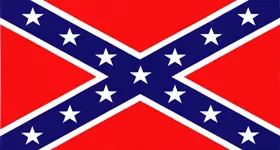Civil War Battles |
Colonial Wars |
American Wars |
Link To This Page — Contact Us —
The Battle of Bayou LaFourche
July 13, 1863 in Bayou LaFourche, Louisiana
Union Forces Commanded by:
Col. Nathan A.M. Dudley
Col. Nathan A.M. Dudley
| Forces | Killed | Wounded | Captured |
| - | - | - | - |
Confederate Forces Commanded by:
Brig. Gen. Thomas Green
| Forces | Killed | Wounded | Captured |
| 750 | - | - | - |
**Missing and Captured
Conclusion: Confederate Victory

BATTLE SUMMARY
Following the surrender of Port Hudson early in July, the XIX Corps divisions of Union Brig. Gens. Godfrey Weitzel and Cuvier Grover were transported to Donaldsonville, Louisiana. From there they could operate along either side of Bayou LaFourche, below Donaldsonville, a haven for Confederate Regulars and guerrillas.On the 11th and 12th, skirmishing broke out between the pickets of both divisions and Confederate cavalry under Brig. Gen. Thomas Green. On the 13th, Weitzel and Grover each sent out a brigade, down opposite sides of the bayou, to neutralize their opposition.
Instead of awaiting their arrival, Green decided to land the first blow. Up the west side of the bayou, he led 3 Texas cavalry regiments and a 2-gun artillery section of his own brigade, some 750 effectives in all, against Weitzel's 3rd Brigade. The latter, under Col. Nathan A. M. Dudley, consisted of 1st Massachusetts and 2nd New York infantry regiments, with 2 artillery sections and a cavalry troop attached. Positioned some miles in Dudley's rear, a supporting brigade, led by Col. Charles J. Paine, comprised 5 infantry regiments- 1 each from Louisiana, Maine, New York, and 2 from Massachusetts.
Undeterred by the size of the opposition, Green advanced through a cornfield that stretched from the bayou to a dense swamp farther west. Two detachments from the 5th and 7th Texas led the attack, striking Dudley's front and left flank simultaneously near Cox's Plantation. The flanking troops broke up Dudley's cavalry and captured 3 of his cannons. Meanwhile, Green's 4th Texas cavalry cut between the cornfield and swamp to strike the Union right.
The timing and strength of the attack were such that Dudley's men rushed north in haste, several times attempting without success to reform. Not till they had reached Paine's position could they make a stand, forcing the Confederates to pull back.
At the same time, on the east bank of the bayou, the Federals suffered an even more ignominious repulse. Grover's southward marching 1st Brigade, under Col. Joseph S. Morgan of the 90th New York, consisted of Morgan's regiment plus the 91st and 131st New York, the 1st Louisiana, and the 22nd Maine infantry regiments. With such numbers, it should have overwhelmed the 400 opposing effectives under Green's subordinate, Col. W.P. Lane. Unaccountably, Morgan panicked on first contact, and his men seemed to assimilate his fear, throwing down their guns in the face of a limited assault by mounted and dismounted troopers and fleeing north through plowed fields and thickets. Many were picked up as prisoners, without offering resistance. His opposition, having melted away, Col. Lane pointed his cannon across the bayou and helped complete the route of the Federals on the west bank.
After the Union forces reached the safety of fortifications near Donaldsonville, their superiors sought the reasons for their disgraceful performance. A brief investigation determined that Col. Morgan (who at Port Hudson had been accused of dereliction of duty through alcoholism) had been drinking heavily on the morning of the fight. On these grounds, he was court-martialed and sentenced to dismissal from the army.
Only the vanquished, however, were interested in fault-finding. To Green, and his hard fighting Texans, it was enough to know that they had "completely paralyzed" the Yankees who had come to run them out of southeastern Louisiana.
